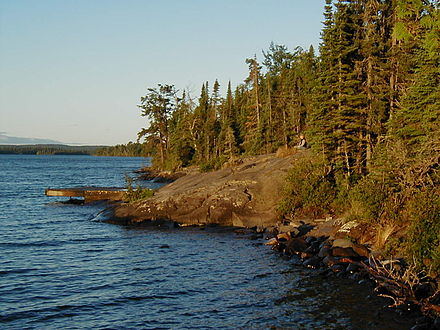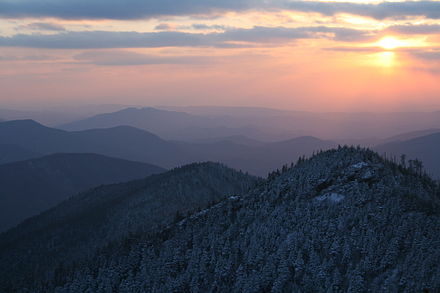 The United States has an extensive series of national parks, national monuments, national historic sites, national recreational areas, national preserves, and so on, which encompass some of the most spectacular landscapes and evocative landmarks in the country. Preserving much of the nation's scenic and cultural heritage, the vast National Parks System includes icons of American patriotism such as the Statue of Liberty and Mount Rushmore, natural wonders like the Grand Canyon and Yosemite Valley, historic treasures like the cliff dwellings of Mesa Verde, geological curiosities such as the geysers of Yellowstone and the volcanoes of Hawaii, and memorials to the great and to the fallen of America's past.
The United States has an extensive series of national parks, national monuments, national historic sites, national recreational areas, national preserves, and so on, which encompass some of the most spectacular landscapes and evocative landmarks in the country. Preserving much of the nation's scenic and cultural heritage, the vast National Parks System includes icons of American patriotism such as the Statue of Liberty and Mount Rushmore, natural wonders like the Grand Canyon and Yosemite Valley, historic treasures like the cliff dwellings of Mesa Verde, geological curiosities such as the geysers of Yellowstone and the volcanoes of Hawaii, and memorials to the great and to the fallen of America's past.
Understand
.jpg/440px-0020_Grand_Canyon_Junior_Ranger_Program_(5446825960).jpg)
The National Park System incorporates hundreds of units spread across every state in the union as well as several U.S. territories. National Park System units are administered by the National Park Service (NPS), although there are also several monuments and other sites that are a managed by other government agencies. These are indicated in the listings below by the following acronyms:
- __BLM__ — [Bureau of Land Management](https://www.blm.gov/), U.S. Department of the Interior.
- __COE__ — [United States Army Corps of Engineers](https://www.usace.army.mil/), U.S. Department of the Army.
- __FWS__ — [Fish and Wildlife Service](https://www.fws.gov/), U.S. Department of the Interior.
- __NOAA__ — [National Oceanic and Atmospheric Administration](https://www.noaa.gov/), U.S. Department of Commerce.
- __USFS__ — [United States Forest Service](https://www.fs.usda.gov/), U.S. Department of Agriculture.
Save for the smallest of sites, nearly all NPS units have a visitor center located near the primary entrances, where you can view exhibits about the park, ask a park ranger any questions you might have, purchase souvenirs, and pick up a map or trail guide. If you plan to camp in a park, the visitor center is often a required stop to pay camping fees or collect your permit. Park units administered by agencies other than the NPS, such as the BLM or the USFS, will sometimes also have visitor centers, although visitor facilities at these parks tend to be less developed than their NPS counterparts.
Park rangers regularly offer guided tours, nature walks, or campfire talks where they educate visitors about the park; information about these activities will usually be posted at the visitor center or campgrounds. At any NPS site, you can purchase a "passport book," which you can use to collect commemorative stamps from each park you visit. Many of the parks also have a Junior Ranger program, a learning activity for youth where children can complete an activity sheet (available at the visitor center) and return it to a park ranger in order to receive a badge or certificate.
 Among the hundreds of park system units are several designations (parks, monuments, historic sites, etc.), but the designations for individual units are mostly technical and relate more to the focus of the individual unit than to the visitor experience, which is remarkably consistent across the units administered by the NPS.
Among the hundreds of park system units are several designations (parks, monuments, historic sites, etc.), but the designations for individual units are mostly technical and relate more to the focus of the individual unit than to the visitor experience, which is remarkably consistent across the units administered by the NPS.
- National Parks are the crown jewels of the system, designed to preserve the most striking natural wonders in the country.
- National Monuments are more numerous, and because they can be established by simple presidential decree, are more varied in their purpose, covering everything from scenic wonders to areas of significant historic or cultural importance.
- Various other natural areas include National Preserves, National Seashores, National Lakeshores, and National Rivers. National Recreation Areas are intended less for environmental protection and focus on offering recreational opportunities in certain scenic areas
- Important historic areas include National Historical Parks, National Historic Sites, National Battlefields, and National Military Parks. National Memorials pay tribute to notable American figures or events.
- United States National Parkways are scenic roadways.
Lastly, the NPS, along with the BLM and the USFS, also maintain a series of National Historic and Scenic Trails that criss-cross the nation.
Fees and permits
 Entrance fees for individual parks and sites vary considerably. In general, most historic sites and memorials have free admission or charge at most a few dollars, while most parks charge anywhere from only a few dollars to $30 for some of the most famous parks. Many parks that charge admission fees charge less if you enter the park on foot, bicycle, or motorcycle than if you drive. Additionally, most parks that charge make their admission fees good for a full 7 days. Annual passes for individual parks are also available, and tend to cost between $25 and $60. See the individual park pages for detailed admission info on each park.
Entrance fees for individual parks and sites vary considerably. In general, most historic sites and memorials have free admission or charge at most a few dollars, while most parks charge anywhere from only a few dollars to $30 for some of the most famous parks. Many parks that charge admission fees charge less if you enter the park on foot, bicycle, or motorcycle than if you drive. Additionally, most parks that charge make their admission fees good for a full 7 days. Annual passes for individual parks are also available, and tend to cost between $25 and $60. See the individual park pages for detailed admission info on each park.
See also
- National parks
- United States National Park System
Related: United States of America
